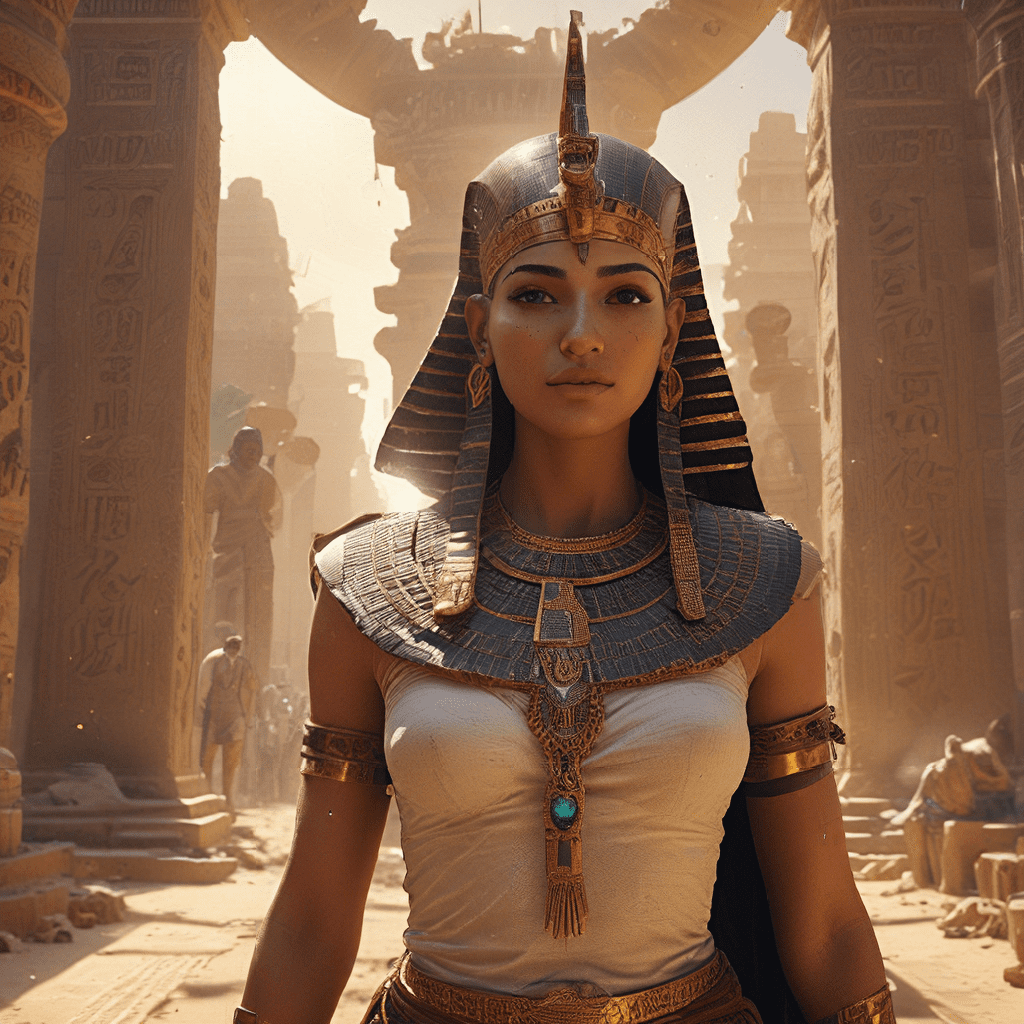The Egyptian Concept of the Afterlife
The ancient Egyptians believed that life continued after death, and they placed great importance on preparing for the afterlife. They envisioned a journey to the underworld, a realm of both danger and reward, where the deceased would be judged and their fate determined. The Egyptians believed that the soul, or “ka,” would be weighed against the feather of Ma’at, the goddess of truth and justice, to determine if the person was worthy of entering the afterlife in the Field of Reeds, a paradise-like realm of eternal bliss. Those who failed the judgment were condemned to a second death in the Duat, a dark and desolate underworld.
The Importance of the Heart Weighing Ceremony
The heart weighing ceremony was a crucial part of the Egyptian afterlife beliefs. The ceremony took place in the Hall of Two Truths where Anubis, the jackal-headed god of the dead, weighed the heart of the deceased against the feather of Ma’at. Thoth, the god of wisdom and magic, recorded the results. If the heart was lighter than the feather, the deceased was declared pure and was allowed to enter the afterlife. If the heart was heavier, it would be devoured by Ammit, a beast with the head of a crocodile, the body of a lion, and the hindquarters of a hippopotamus, symbolizing the devouring of evil.
The Role of Anubis and Thoth
Anubis and Thoth played important roles in the Egyptian afterlife. Anubis was responsible for preparing the deceased for the afterlife, embalming their bodies and guiding their souls to the Hall of Two Truths. Thoth, as the scribe of the gods, was responsible for recording the results of the heart weighing ceremony and ensuring that the deceased was judged fairly. Anubis and Thoth were seen as guardians of the afterlife, helping to ensure that only the deserving souls entered the Field of Reeds.
The Journey Through the Underworld
The journey through the underworld was a perilous one, filled with trials and obstacles. The deceased soul had to navigate a maze of tunnels, rivers, and deserts, each filled with dangers and challenges. The journey was described in detail in the Book of the Dead, a collection of spells and rituals designed to guide the deceased through the afterlife. Along the way, the deceased had to overcome a variety of obstacles, such as perilous creatures and judgments from the gods. The soul was also expected to recite spells and answer questions from the gods to prove their worthiness to enter the Field of Reeds.
Significant Trials and Obstacles
The trials and obstacles encountered by the deceased in the underworld tested their worthiness to enter the afterlife. These trials ranged from navigating treacherous landscapes and avoiding dangerous creatures to answering riddles and questions posed by the gods. Some common obstacles included the Lake of Fire, the Barque of Ra, and the Gate of the Underworld. The deceased had to prove their knowledge of magic, their adherence to Ma’at, and their ability to overcome challenges. These trials served as a test of the soul’s moral character and its preparedness for the afterlife.
The Halls of Amenti and Osiris
After navigating the underworld’s challenges, the deceased soul arrived at the Halls of Amenti. This realm was ruled by Osiris, the god of the underworld, who judged the souls based on their actions in life. The afterlife was a place of peace and happiness, where the souls of the righteous could enjoy eternal life and happiness. The Halls of Amenti was a place of judgment, but also a place of rejuvenation.
The Importance of the Book of the Dead
The Book of the Dead was a collection of spells, incantations, and prayers designed to help the deceased navigate the afterlife. It provided guidance on the trials and obstacles they would face, as well as spells to help them overcome them. The Book of the Dead was often buried with the deceased, and its importance was reflected in the elaborate hieroglyphs and illustrations that adorned its pages. The Book of the Dead helped the deceased to prepare for death and to navigate the afterlife, offering hope and guidance through the perils of the underworld.
Achieving Immortality and Entering the Land of the Blessed
For the Egyptians, achieving immortality and entering the Land of the Blessed was the ultimate goal of the afterlife. The Field of Reeds was a paradise where the righteous souls could enjoy eternal life, happiness, and peace, a realm of eternal bliss. This paradise was a place of abundance, where the deceased could enjoy feasts, games, and other pleasures. The Egyptians believed that by preparing for death and by living a virtuous life, they could ensure their passage to this glorious afterlife.
The Significance of the Pyramid Texts
The Pyramid Texts were inscribed on the walls of the pyramids of the Old Kingdom period. They provided insight into the early beliefs about the afterlife, including the journey to the underworld, the judgment of Osiris, and the desire for eternal life. The texts offered guidance for the deceased, spells to aid their journey, and descriptions of the afterlife. They were instrumental in preserving and transmitting knowledge about Egyptian afterlife beliefs.
The Evolution of Egyptian Afterlife Beliefs
The Egyptian beliefs about the afterlife evolved over thousands of years, influenced by changing social and religious practices. Over time, the concept of the afterlife became more complex, with new gods, rituals, and beliefs emerging. As Egyptian society evolved, so did their understanding of death and the afterlife. While the core beliefs remained consistent, these adaptations reflected the changing values and understanding of the universe.




